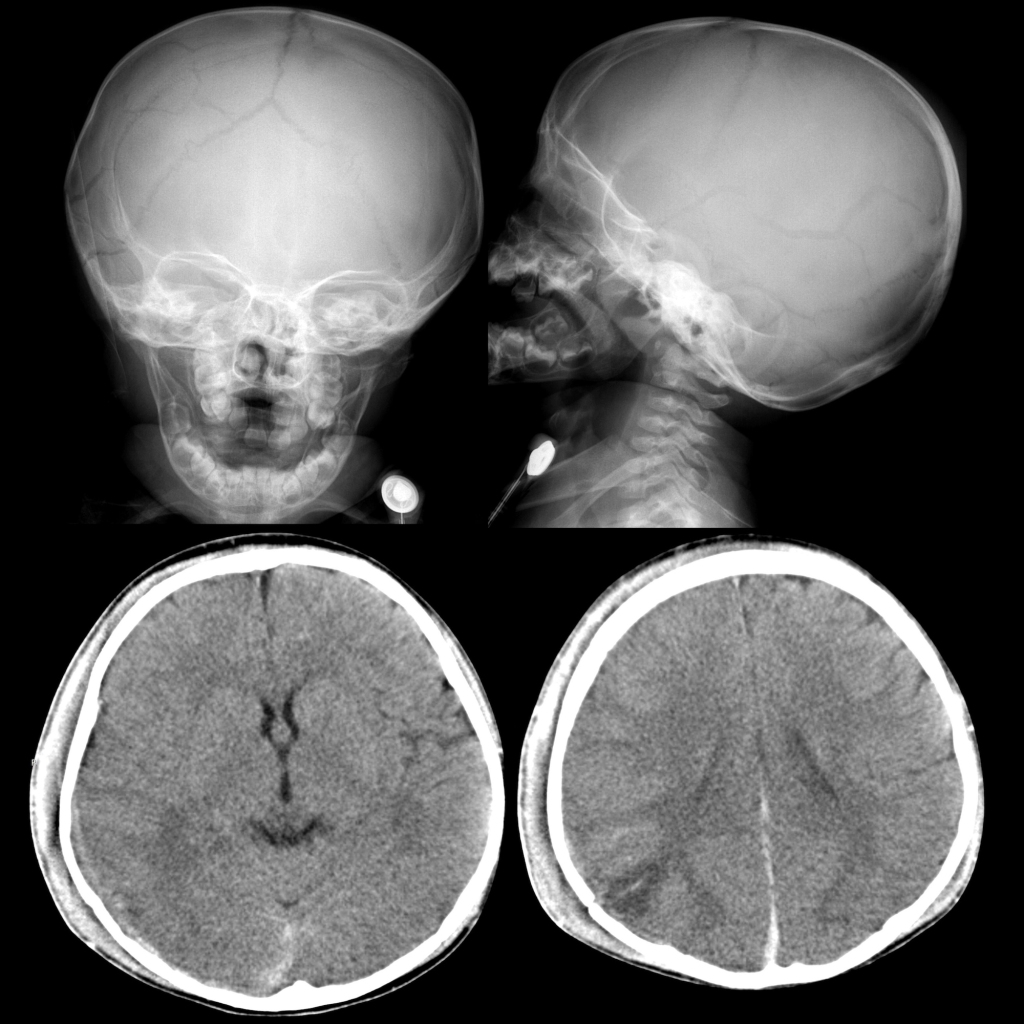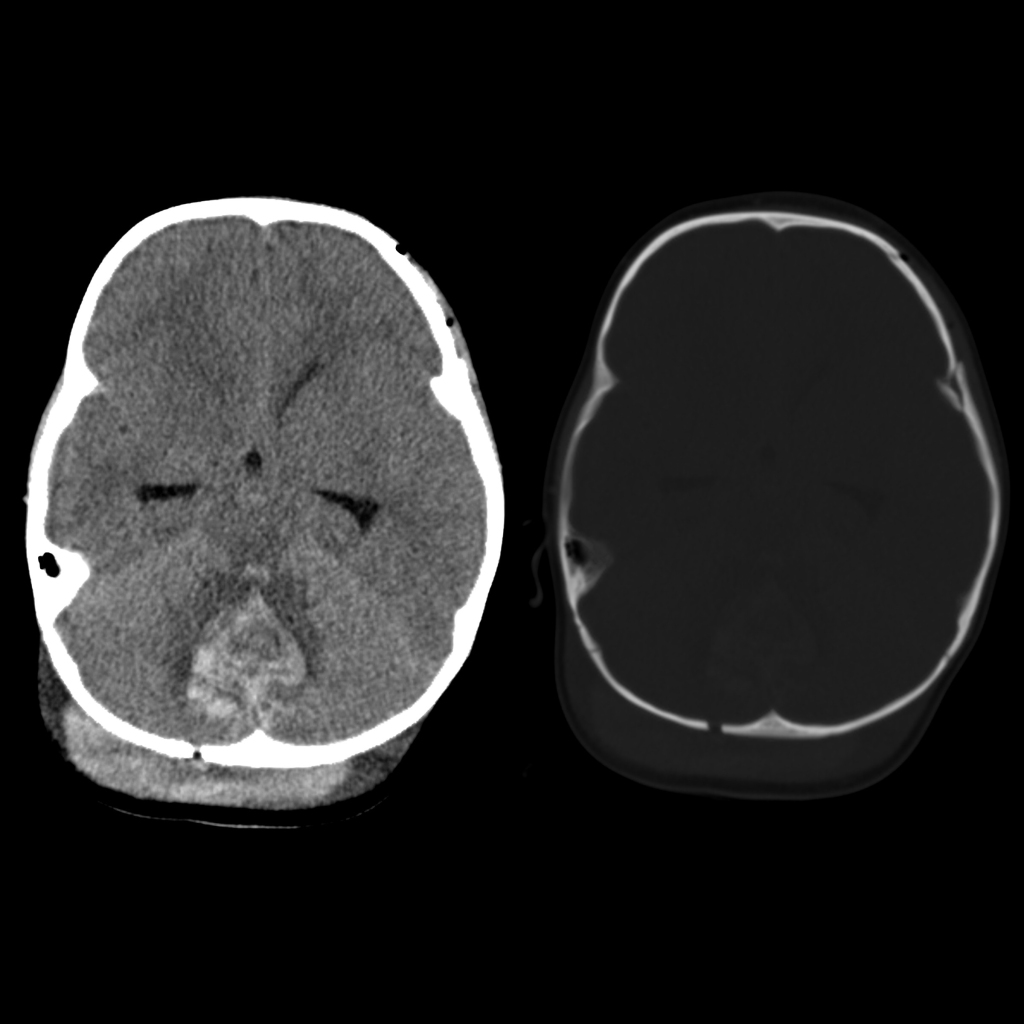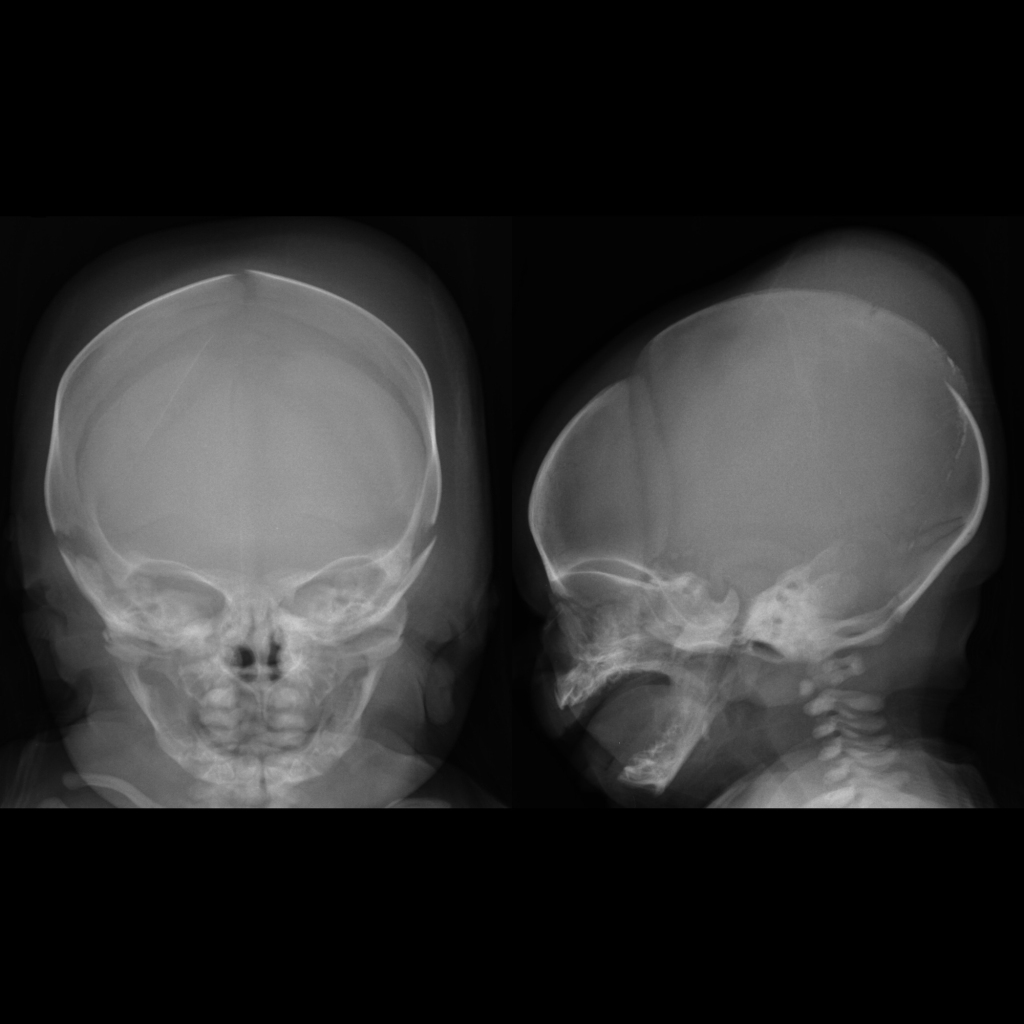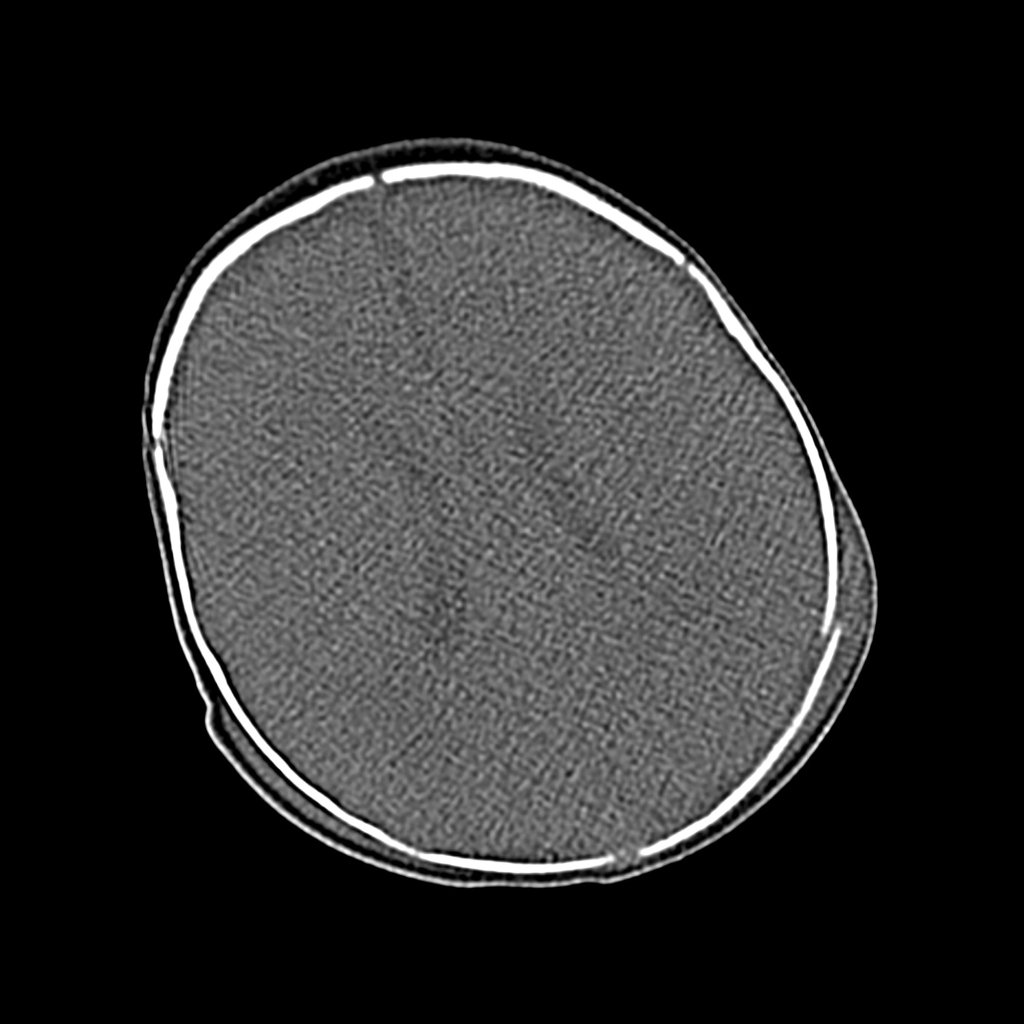- Etiology: birth trauma or blunt trauma resulting in blood in subgaleal space
- Imaging: fluid collection in subcutaneous tissue that crosses sutures, contains blood, rarely see fractures in birth trauma
- DDX:
— Cephalohematoma is deepest scalp hematoma lying between skull and pericranium, does not cross suture lines
— Subgaleal hematoma is middle scalp hematoma lying between pericranium and epicranial aponeurosis, does cross suture lines
— Caput succadaneum is most superficial scalp fluid collection lying between epicranial aponeurosis and skin, does cross suture lines - Complications:
- Treatment:
- Clinical: lasts for weeks
Radiology Cases of Subgaleal Hematoma






